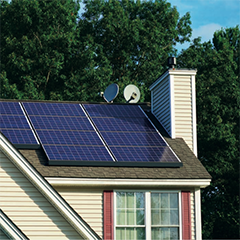PES thought it was time to find out more about, SMA America and Brad Dore, Director of Marketing was happy to oblige. A global specialist company in PV, providing innovative solutions to their customers and setting standards for decentralized renewable energy. Read on to find out about optimization, roof top safety, collaboration, their vast international reach and much more.
PES: Welcome to PES Solar/PV Brad, it’s great to have this opportunity to speak with you. Would you like to begin by giving us a brief overview of SMA America?
Brad Dore: SMA America is the U.S. based subsidiary of SMA Solar Technology, a leading global specialist in photovoltaic system technology. SMA America is responsible for SMA’s sales and service operations in the America’s region.
PES: Could you tell us about the traditional methods of optimization and your approach to it?
BD: When installers set out to optimize a system, they are looking to improve energy harvest and simplify service, while addressing all relevant code requirements for installation. In much of North America, the presumed way to do this is through the addition of power conditioning devices on each module.
While this method has some advantages, it comes with significant drawbacks including a high component count and electronics that are forced to work constantly in an inhospitable rooftop environment. This results in excessive thermal cycling and wear and tear that ultimately complicates service, thereby putting more installers at risk because they spend more time on the roof installing, troubleshooting, and replacing devices.
SMA has pioneered an optimization method that does not rely on traditional module-level devices for power management. Our ShadeFix technology improves energy production without those added components under the module, reducing system componentry by 50%.
This yields significant replacement and service savings, while improving safety. Instead of using complicated devices at the module, SMA optimizes power at the inverter and uses very simple SunSpec certified rapid shutdown devices to address code requirements at the module. In addition to the simplicity, a recent university study also showed this model produces energy gains under most conditions when compared to traditional DC optimized, module-level technology.
PES: Can you explain how you apply this to the residential market?
BD: This model is perfect for the residential market, where doing work on space constrained rooftops is both dangerous and time consuming. This model produces more energy while limiting the risk of failures and service work. It is also the simplest way to achieve compliance with current electrical codes in the United States, which essentially require module-level shutdown.
Therefore, the benefits achieved for residential stakeholders are twofold: PV installers have more time to spend on revenue-generating activities while homeowners obtain peace of mind that their system will generate maximum energy with minimum service risk.
PES: You mentioned SunSpec certified technology. Can you elaborate on who the SunSpec Alliance is and the benefits it offers?
BD: The SunSpec Alliance is a consortium of more than 100 industry participants. It comprised of manufacturers, integrators, policy makers, and more. Its mission is to develop industry standards that help drive solar adoption. One of the many standards they have developed includes a communications protocol to address the shutdown requirement outlined in NEC 2017 690.12.
By creating an open standard, the SunSpec Alliance helps drive cost out of the system. It also reduces business risk by creating an ecosystem of technology providers so that installers are not hindered by proprietary technology, or single-sourced solutions for shutdown devices.
PES: Are there any specific service concerns, what strategies can be implemented to minimise service risk for both the installers and the home owners?















